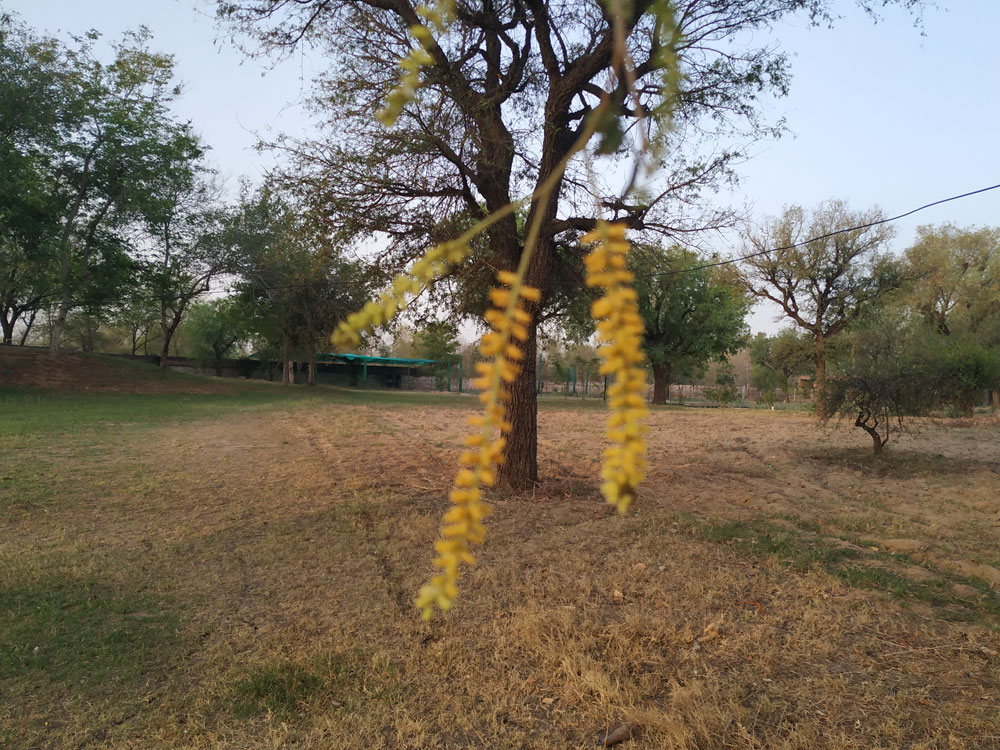More Signs of Climate Change – The On/Off of Seasons
Following our last post announcing the onset of a premature summer, we went through one week of unbelievably extreme heat, which sent us cowering into the shade feeling sorry for ourselves ( even though our grounds were full of exhuberantly blooming flowers and we ought to have taken them as examples to emulate ).
All around us, uncomplaining farmers and their families worked hard in the baking sun to cut the ripe wheat and barley crops standing in their fields, no doubt looking forward to the prospects of plenty awaiting them at the end of the road.
But the extreme heat provoked an equally extreme response. With barely a couple of hours warning – the rapid massing of clouds, the whipping up of a slight breeze – there arrived heavy icy rains ( in some parts of the countryside, accompanied by hailstorms ) that went on for a whole day and night. The temperature dropped hugely, and the late evenings and early mornings called for light shawls; it felt and looked as though spring had returned.
For the farmers in our area – including the families of some of our staff – the unseasonal heavy rain meant the tragic loss of most of both their still-standing wheat and barley and the harvested sheaves that were still lying on the ground waiting to be stacked and secured with tarpaulin until threshing time (dry heat is essential for these operations, and any dampness can cause rot and blight). Luckily at Savista, we did not face similar ruin, because this agricultural season we had decided to leave our fields fallow.
Luckier still was what the rains did for our grounds. We found that our Palash buds (Flame of the Forest) had burst open in the cool air, and the brick lane running alongside was almost on fire with the violent red of the flowers!
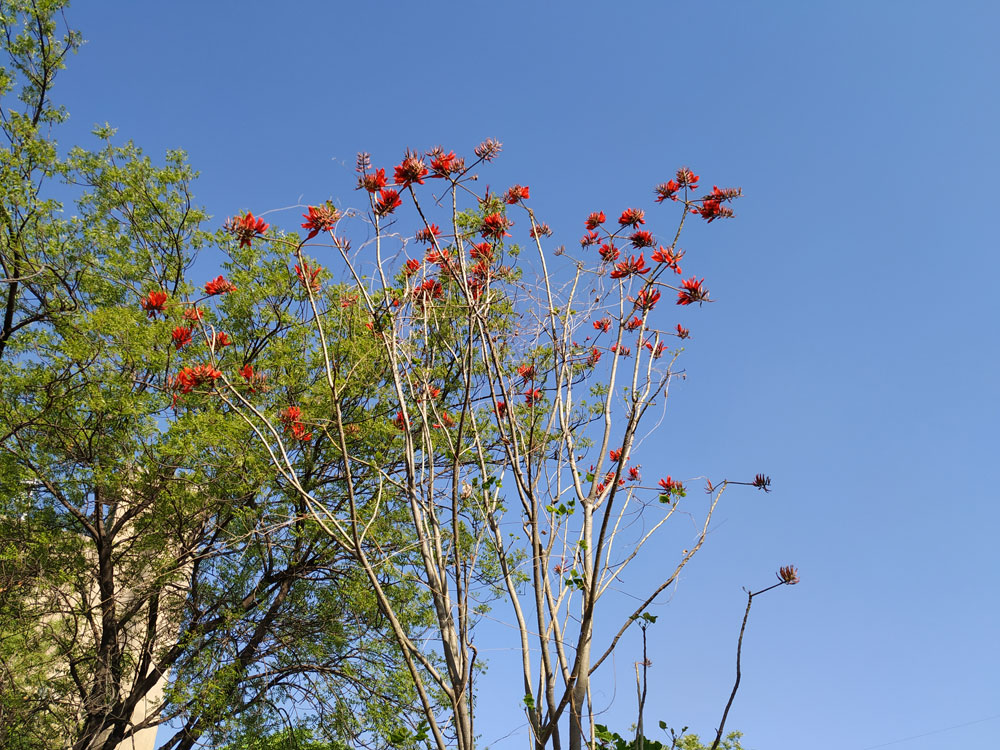
Our Neem (Margosa) trees – that can be seen everywhere on the property, and that had not been able to flower this year due to the early onset of heat – had also broken into profuse flower, drenching the air with perfume.
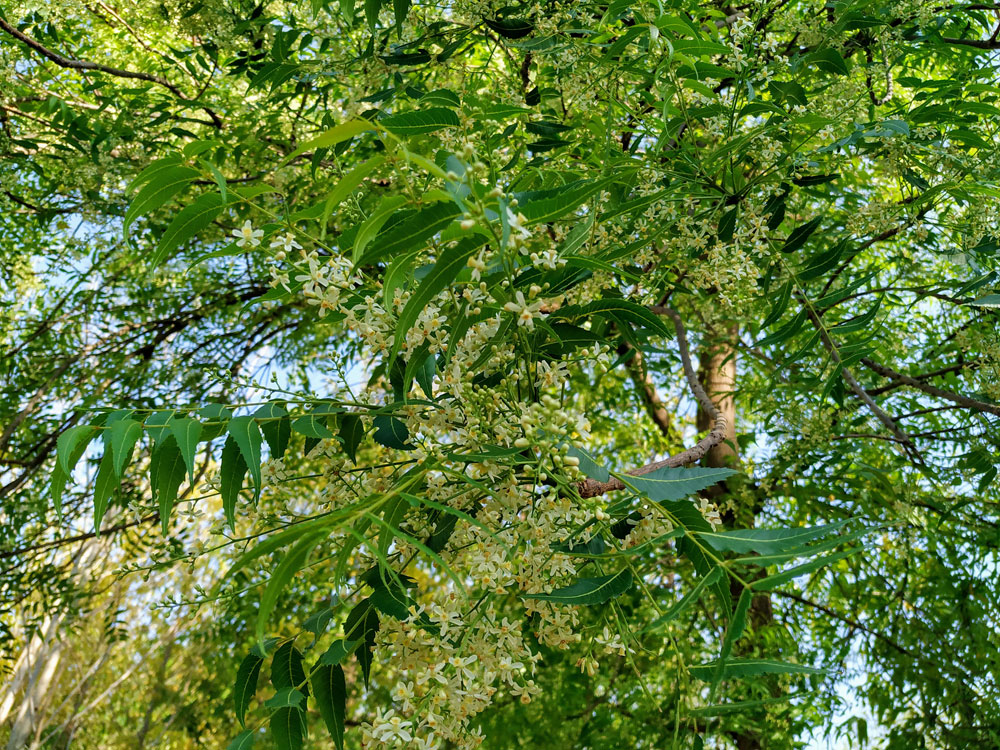
Our two Jacaranda trees, too, had allowed themselves to be jolted into enthusiasm and, for the first time ever, both were fully covered with purple blooms.
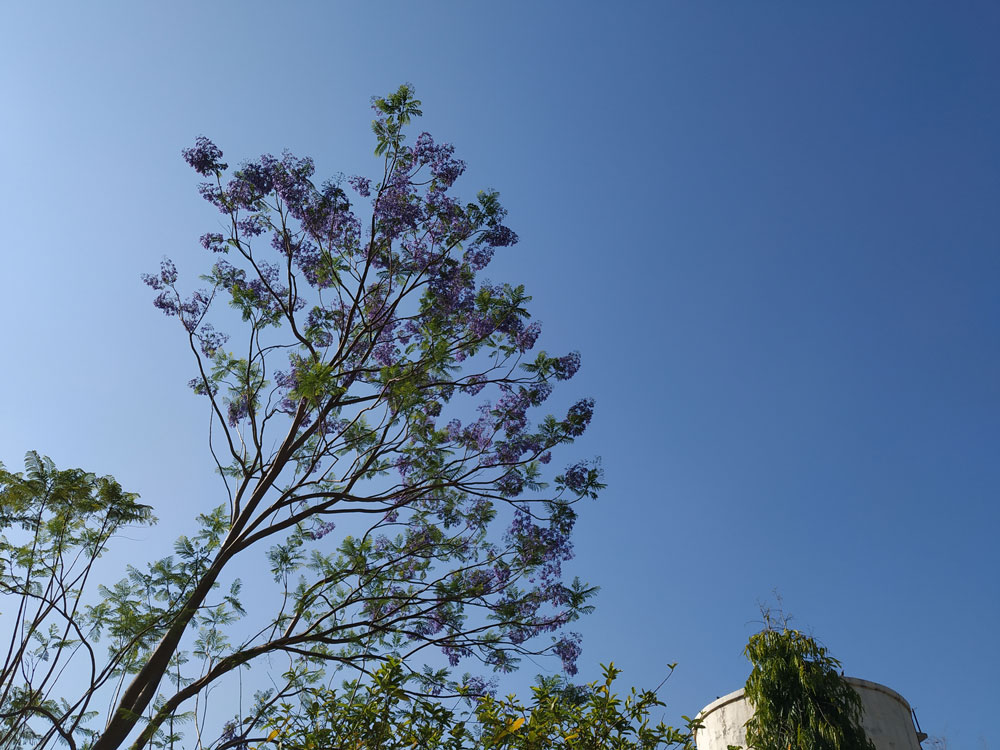
A week is a long time in nature. It was inevitable – and rightly so – that summer return to schedule. Since yesterday afternoon the mercury has been rising, and today we are finally – and properly – into our full blown summer.
The Palash flowers have all dried overnight. But the creamy Neem flower clusters and bouquets of purple Jacaranda continue to make every foray into the outdoors rewarding, as does the quiet fragrant Jasmine that is blooming again in the renewed heat.
In the wake of the Neem flowers, Neem berries ( Nimoli in Hindi) will take their place. The ground will be littered with the mature berries for weeks thereafter, acting as a natural herbicide for the soil. We collect as many of the berries as we can and set them aside to dry. We then pound them, mix them with earth and use the mixture as a bio-pesticide/herbicide when the fresh planting season begins.
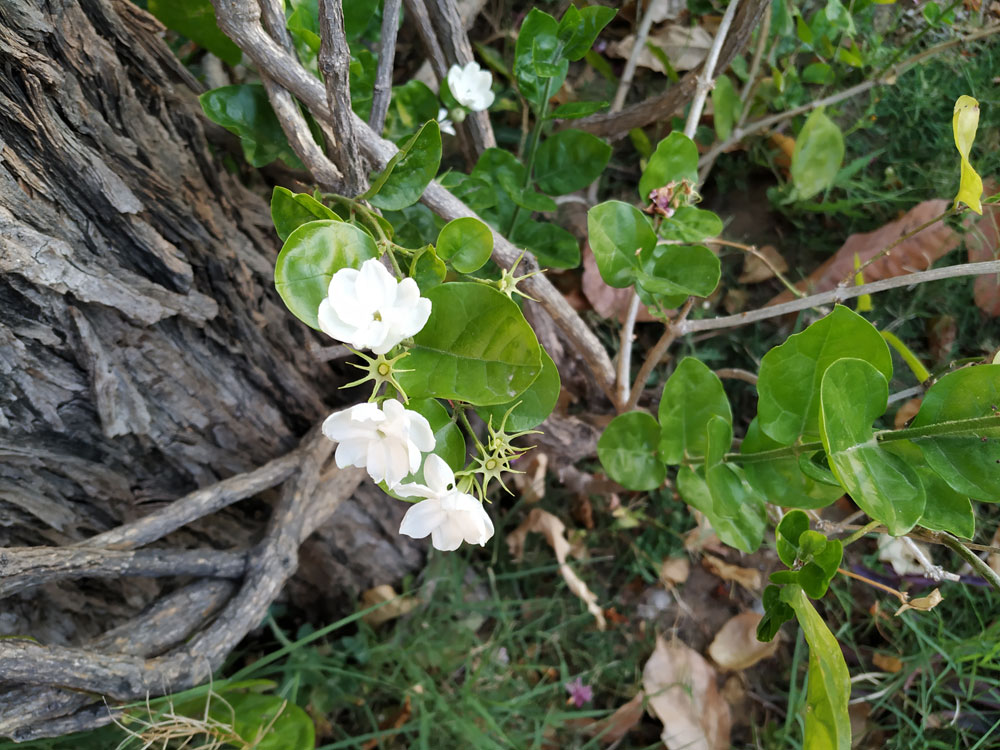
Not to be outdone, our Khejri trees, too – about fifty of them – have started to bloom with the setting in of the summer. It is a very short flowering cycle, and soon every delicate flower cluster will give birth to hundreds of beans, high in protein, and nutritious for humans, animals and the soil alike. The beans are prized by the local Rajasthani people as an almost divine legume, due to the Khejri being worshipped as a sacred tree and symbol of succour and fertility in an otherwise arid and sand blown environment. The sheep, goats and camels of the region love the taste; we will be feeding the beans to our sheep whose milk will be further enriched by the protein. Those beans that fall to the ground will fertilise the soil and help fix the nitrogen in it. It is for this reason that Khejri trees are planted inside the fields in Rajasthan, where they stand evenly paced amidst the crops, aiding them by keeping the topsoil in place and also enriching the soil.

